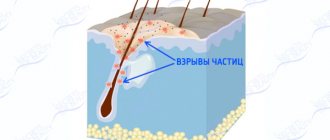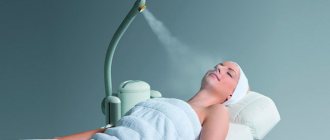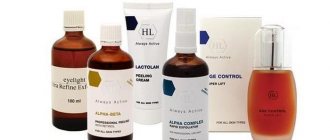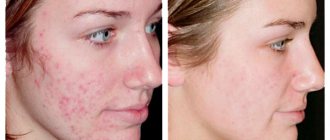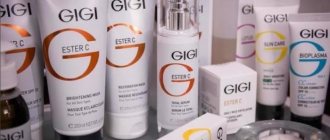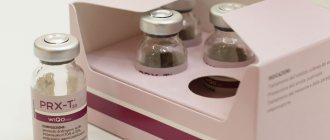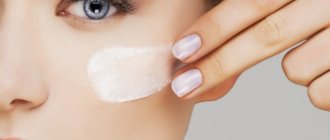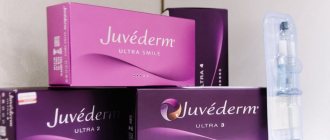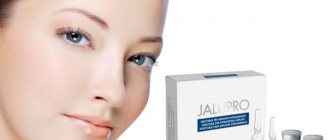How it works
The method combines laser peeling and photorejuvenation with a carbon enhancer. The technique is based on treating the skin with carbon (carbon-containing) gel, followed by exposure of this area to a neodymium laser. The gel penetrates into the deep layers of the dermis and exerts its therapeutic effect there: it binds dead cells and removes excess sebaceous secretions. Carbon molecules seem to serve as beacons for laser waves, indicating the problem area. The laser hits the target exactly, cleanses the skin of waste material, and at the same time has a photorejuvenation effect.
What is carbon peeling?
Carbon peeling is a complex procedure that combines photorejuvenation and laser peeling. At the beginning of the session, the skin, cleared of makeup, is treated with a carbon-containing gel, then this area is exposed to a laser. The gel used easily penetrates deep into the pores, after which it attracts dead epidermal cells and excess sebaceous secretions. The next stage is the use of a device that emits a laser beam.
- Find out the current offers
- Sign up for a consultation
Online registration
The carbon particles present after applying the gel attract the laser, as a result of which the carbon is destroyed along with dead particles. At the same time, the tissues warm up, pathogenic microorganisms are destroyed, cell regeneration processes are launched, and the production of collagen fibers and elastin is activated. That is, the essence of laser exposure is photorejuvenation and a bactericidal effect.
Prices for laser carbon peeling in Moscow
| Application area | Cost, rub. |
| Carbon facial peeling | 4 800 |
| Carbon neck peeling | 3 000 |
| Carbon peeling neckline | 4 800 |
| Carbon peeling of hands | 2 800 |
| Carbon forehead peeling | 2 000 |
| Carbon cheek peeling | 3 000 |
| Carbon chin peeling | 1 800 |
| Carbon nose peeling | 1 200 |
| Carbon peeling of face and neck | 6 000 |
| Complex carbon peeling (face, neck and décolleté) | 8 000 |
A cosmetologist will help you determine the exact number of procedures required at your initial appointment.
Sign up for a consultation
Make an appointment with a specialist and receive individual advice and answers to all your questions
Sign up
Indications
The procedure is performed if you have:
- excessive work of the sebaceous glands
- visually enlarged pores, comedones;
- acne prevention;
- post-acne;
- age spots, including freckles;
- dull complexion;
- hyperkeratosis;
- age-related changes, fine wrinkles.
Carbon peeling is carried out in the face, neck, décolleté, and back. The delicacy of the procedure allows it to be safely used on the most sensitive areas (around the eyes, lips).
Contraindications
The procedure is not performed if you have:
- individual intolerance to the components of the gel;
- oncological diseases;
- pregnancy, lactation;
- inflammatory processes, herpetic rashes at the site of application;
- keloid scars;
- severe pathologies of the heart and blood vessels, a functioning pacemaker;
- diabetes;
- severe psychoneurological disorders;
- infectious diseases in the acute stage.
Briefly about the procedure
- Duration
- 10 - 30 min.
- Periodicity
- Equipment
- Anesthesia
- Recommended course:
- The effect occurs:
Advantages of carbon peeling over other types of peeling
Carbon peeling combines the best of its predecessors. Why you should prefer this method:
- Unlike chemical peeling, there is no chemical interaction of the active substance with dermal cells. This means that the possibility of an allergic rash or burns is excluded;
- can be carried out at any time of the year;
- no mechanical damage, inflammatory hyperemia or microtrauma;
- there is no long rehabilitation period;
- no risk of infection;
- Compared to laser photorejuvenation with carbon peeling, the heating of the skin is more gentle, so there will be no post-inflammatory redness.
The carbon peeling technique imitates the natural process of skin self-cleansing. The carbon used in the procedure is a natural sorbent for the body. So the delicacy and safety of the technique allows the method to be used even by people with particularly sensitive skin.
Preparation for the procedure
Carbon peeling does not require complex, lengthy preparation. But a few nuances still need to be taken into account. Firstly, the indications for the procedure are determined only by a cosmetologist. At your consultation, you will discuss the need for peeling and rule out any contraindications.
Secondly, you need careful skin care on the eve of peeling. Immediately before the procedure, you should not steam the pores or conduct aggressive chemical or mechanical cleansing of the face. Also, manipulation is not carried out after a “fresh” tan. If local inflammatory diseases on the face occur during preparation, it is better to undergo carbon peeling until recovery.
How does carbon peeling work?
What happens inside the dermis during the procedure? The carbon contained in the gel penetrates deep into the pores, into the intercellular space, where it has an adsorbing effect. Carbon molecules attract and bind impurities and oily skin secretions.
Laser-carbon interaction causes the effect of explosion of gel microparticles. It is this detonation that activates the rejection of dead cells along with accumulated decay products, and the surface layer is cleansed. Heating the deep layers of the dermis with a laser beam is called photothermolysis. Photothermolysis has a complex effect:
- bactericidal - pathogenic microorganisms die under the influence of laser energy;
- rejuvenating - stimulates the synthesis of collagen and elastin fibers, improves blood flow, strengthens the connective tissue framework of the dermis.
Progress of the procedure:
- Examination by a cosmetologist. Express test for skin sensitivity to carbon gel.
- Preliminary cleansing of the skin: makeup removal, antiseptic treatment.
- Application of carbon gel. Wait time until completely dry.
- Impact on the treated area with a neodymium laser.
- Removing gel residues with a cleanser. Skin treatment with nourishing cream.
Self-healing processes occur both deep inside and outside, potentiating each other:
- peeling of keratinized epidermis;
- bactericidal effect, destruction of aggressive flora;
- normalization of metabolism by correcting the functioning of the sebaceous glands;
- skin cell regeneration, self-healing;
- reduction/disappearance of acne marks;
- activation of collagen and elastin synthesis;
- reduction of pigmentation, inflammatory redness.
The skin becomes velvety, matte and healthy. The relief of the face improves, age spots become less noticeable, the tone is evened out, small folds are smoothed out. It’s not for nothing that cosmetologists compare the skin after carbon peeling to the face of a porcelain doll.
Recovery after the procedure
Immediately after the procedure, slight redness and peeling may occur. Your task is to follow a few simple rules for gentle care:
- refusal of decorative cosmetics for 2 - 3 days;
- Using moisturizers that suit your skin type. Scrubs and alcohol-containing care products are prohibited;
- protection against UV rays - in summer, sunscreen with SPF 60, at any time of the year, avoiding solarium for 2 - 3 weeks.
How dangerous is carbon peeling?
Carbon peeling, like any medical intervention, should be carried out according to indications and only by specially trained personnel. If there are no contraindications, then the procedure does not pose any danger. Yes, on the first day there may be mild hyperemia and peeling at the site of exposure. In places with an abundance of sebaceous glands, small rashes may appear. With proper skin care, these changes disappear within a few days.
Our doctors
Konorezova Victoria Vladimirovna
Doctor Dermatovenereologist
Cosmetologist
Vaganov Nikolay Vladimirovich
K.M.N.
Plastic surgeon
Romanova Liana Gadzhibalaevna
Doctor Dermatovenereologist
Cosmetologist
Video reviews about the clinic
Basics of facial cleansing
Facial cleansing can be manual or combined. The main purpose of cleansing is deep cleansing and hygiene of the skin, opening pores, removing acne, comedones, and blackheads.
An aesthetic clinic doctor can use only his hands and special tools for manual cleaning, or he can resort to an ultrasonic spatula, cosmetics and chemical compositions, combining these techniques to achieve maximum results. Most often, cleaning is a combined procedure, consisting of several stages, one of which is peeling.
As a rule, 2 types of peeling are involved in combined cleaning. The first is chemical peeling, when the doctor prepares the skin for deep cleansing with a weak acid solution. Peeling opens pores and removes excess horny scales.
The second stage is physical (ultrasonic) peeling. Using a pulsating ultrasonic wave, the remains of keratinized particles are removed and the contents of the pores are removed. Then the doctor manually cleanses deeply clogged pores, eliminates comedones and completes the cleansing procedure by applying a mask that soothes the skin and closes the pores back.
Indications and contraindications for cleaning
Cosmetologists recommend facial cleansing for everyone, especially those with oily and problematic skin. The interval between procedures is determined by the doctor depending on the condition of the skin; some people need to visit a cosmetologist once every 4 weeks, while for others, 1 session every six months or a year is enough.
Expected effect of the procedure
The main result is cleansing of pores, getting rid of blackheads and acne. Deep cleansing of facial skin pores leads to the following changes:
- the general condition of the skin improves;
- comedones, blackheads, inflammation are reduced;
- greasy shine disappears;
- the skin becomes smoother;
- pores become less noticeable;
- the effectiveness of using care products increases.
Types of laser procedures
- laser resurfacing of the face and body is a deep peeling, during which, under the influence of a laser, the surface layer of the skin evaporates, which promotes increased production of elastin and collagen;
- Laser tattoo removal is a method of destroying pigment paint using high-intensity light radiation, which does not involve violating the integrity of the skin;
- laser hair removal of the face and body is a method of eliminating unwanted hair using concentrated beams of light affecting the hair follicles;
- laser removal of blood vessels is a method of excluding affected vessels from the general blood flow system, which consists of introducing a probe with laser radiation through a small puncture in the skin, which helps to “seal” its walls;
- laser treatment of pigmentation is a method based on the phenomenon of photothermolysis, which consists in the ability of pigment cells to absorb the energy of a laser beam, leading to their destruction;
- carbon peeling is a laser procedure on the upper layers of the skin, based on the use of a special nanogel and promoting deep cleansing of the skin, smoothing its relief and cell regeneration;
- laser lifting is a non-surgical method of lifting the face and various areas of the body, which consists of heating the skin and deep subcutaneous structures, which helps to launch metabolic processes in cells;
- Laser acne treatment is the effect of laser flashes on problem areas, which remove bacteria and dry out the rash;
- laser treatment of blood vessels is a technique for gently destroying damaged vessels by exposing hemoglobin and the structure of the vascular wall to light;
- Laser removal of ingrown nails is a method of “evaporation” of the part of the nail plate to be removed, which also helps to disinfect the correction area and eliminate bacteria and fungus.
In addition, depending on the characteristics of the aesthetic problem requiring correction, a combination of the procedures described above can be applied. For example, if there is a vascular network on the face and pronounced signs of post-acne, the treatment plan may include several laser procedures at once, carried out with a break for rehabilitation.
Contraindications to the procedure
There are not many contraindications to carbon cleansing, but all of them must be established at the preparation stage, since the rejuvenation effect and the absence of adverse reactions depend on this.
Main contraindications:
- Oncological processes in the body;
- Intolerance to carbon gel;
- Inflammatory reactions, herpes rash at the intended site of exposure;
- Severe cardiovascular pathologies;
- Pacemaker;
- Tendency to form keloid scars;
- Acute infections;
- Diabetes;
- Acute psychoneurological disorders;
- Pregnancy period and breastfeeding time.
Frequency of carbon peeling sessions
How often should carbon rejuvenation be done and how many procedures will be required to obtain a visible result? Noticeable changes appear almost after the first session. The skin becomes smoother, fresher, and the number of rashes decreases.
Experts recommend carbon peeling to be carried out in courses. For minor skin problems, only 5-6 cleansing procedures will be required to achieve the desired effect. For women with mature skin with pronounced signs of aging – 7-9 procedures. Between them it is necessary to take a break of 5-7 days, during which time the skin is restored.
The duration of one session is 30-40 minutes. After cleaning, you can go home straight away. Carbon peeling does not require special preparation or anesthesia.
Benefits of laser cleaning
This method is accessible and highly effective - the result can be assessed after the first session. Compared to mechanical cleaning, it can be called more gentle, and it differs from the action of acids in a shorter rehabilitation period (with a similar aesthetic result). Another important advantage is the ability to comprehensively combat various imperfections - for example, excess fat, wrinkles, pigmentation.
Due to the fact that the method is non-contact, the risk of infections is reduced, and the effect of the beam on the skin has a rejuvenating effect by stimulating collagen synthesis in the tissue.
